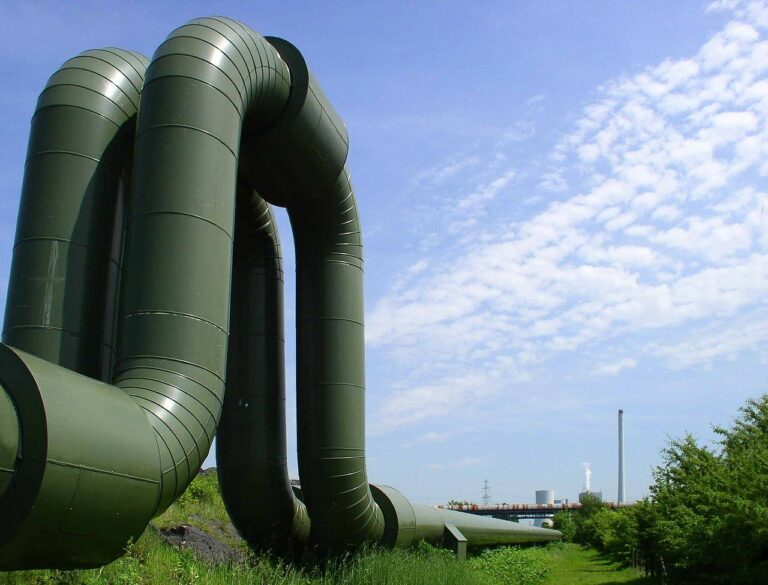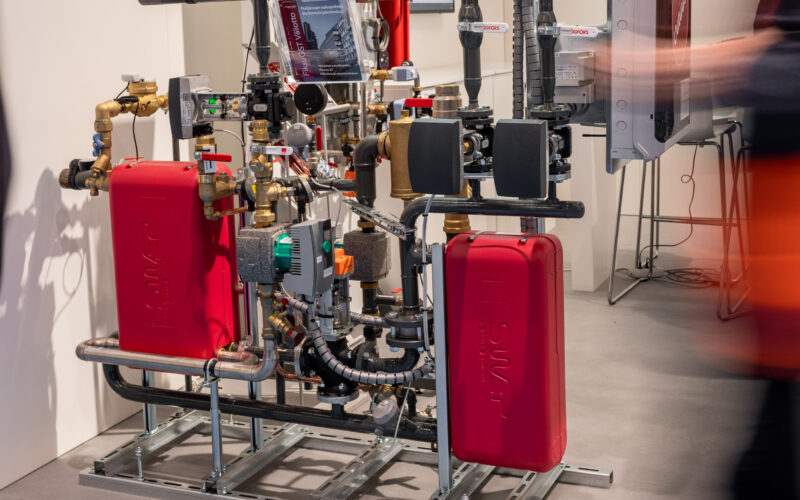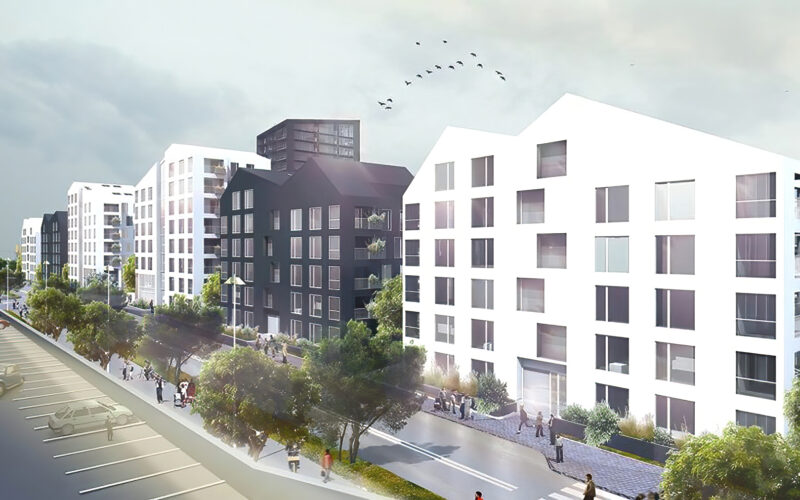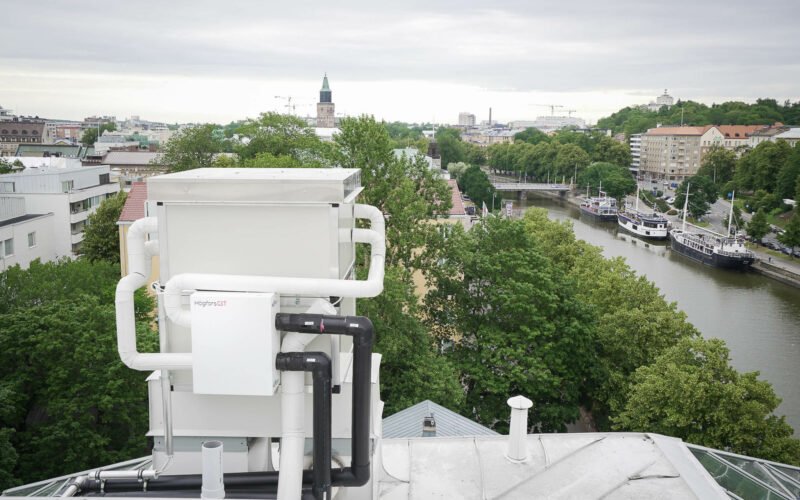This blog series takes you on a time travel from the early days of district heating to the present day, without forgetting the development that has taken place over the years. We also elaborate a bit on what the life of a heater, i.e. an ordinary city dweller, has been like during different generations of district heating. The first part of the blog series takes a look at history: how district heating systems came to be and how they evolved through 1880s to 1970s.
Today, district heating is the most popular form of heating in Finland: more than half of Finns live in a district-heated house. District heating is also a common way to heat homes around the world. District heating thrives especially in cities where the district heating system is most efficient. Although various district heating systems have been in use for almost two centuries, the principle of district heating has remained largely the same: thermal energy produced in a district heating plant is transferred along a pipeline network to properties in need of heat.
This blog series takes you on a time travel from the early days of district heating to the present day, without forgetting the development that has taken place over the years. We also elaborate a bit on what the life of a heater, i.e. an ordinary city dweller, has been like during different generations of district heating. The first part of the blog series takes a look at history: how district heating systems came to be and how they evolved through 1880s to 1970s. The second part deals with the third generation of district heating, which is still the current generation of district heating. The third part focuses in fourth-generation district heating (4GDH), the era of which is beginning in the 2020s.
Urbanization and the prevalence of district heating go hand in hand: it is no coincidence that in the era of industrialization, as people moved to cities, the need for a reliable heating system was also increasing. For urban living, district heating is an effortless, reliable and affordable way to keep your home warm also in the 2020s.
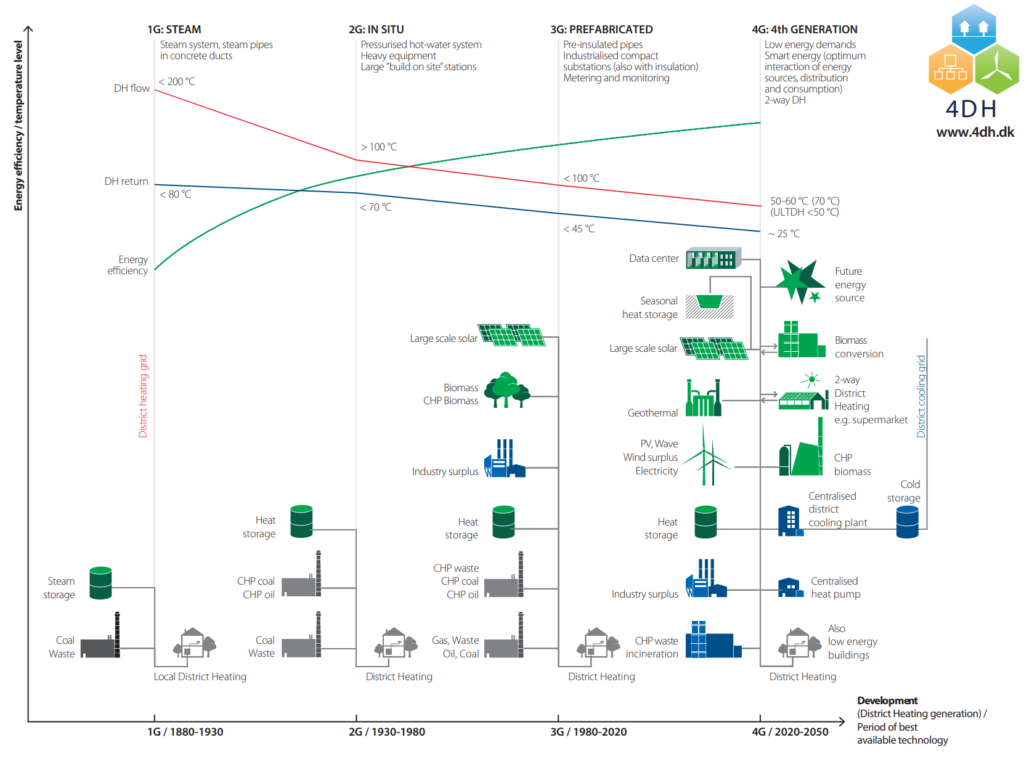
Three generations of district heating
The evolution of district heating has traditionally been divided into three generations: first-generation systems with hot steam as the heat transfer medium saw the light of day in the late 19th century. Second-generation district heating systems switched to using water as a heat transfer medium. The golden age of these systems dates back to the 1930s and 1960s. The third generation of district heating, the so-called Scandinavian district heating, became more common in the 1970s and is gradually making way to the fourth generation of district heating.
District Heating revolutionizes urban heating
Throughout the history, there have been many systems resembling district heating, for example the water transfer systems that were used to heat spas in the Roman Empire. However, the first actual district heating systems were invented in the United States in the 19th century.
Birdsill Holly of the United States is considered to be the inventor of the commercial district heating system. Holly was a mechanical engineer and inventor who, after inventing a fire hydrant system, turned his attention to urban heating. Could the heating of urban buildings be implemented in a more energy efficient way?
At that time, the common practice was for each property to have its own heating boiler. Holly’s goal was to create a system where heat would be produced centrally in one place, making heating more economical and energy efficient. Environmental issues probably weren’t emphasized as much as today, but still, this new invention would improve urban air quality by replacing thousands of small boilers with one large heating plant.
Holly’s invention took off and district heating networks began to be built at a rapid pace: Manhattan built its own district heating network in the 1880s, while Europe’s first district heating network was commissioned in Germany in the early 1890s. First-generation district heating systems from these times are still in use in New York and Paris!

Full steam ahead
In the 19th century, first-generation district heating worked very much in the same way as current systems, with a few exceptions, of course. Heat was produced centrally in district heating plants by burning coal and urban waste. Thus, district heating solved two problems at once: homes were heated more energy-efficiently and waste was conveniently disposed of at the same time. In a way, district heating was the predecessor of modern circular economy!
The new district heating system did not work completely without problems: from the user’s point of view, the steam system is quite noisy, expensive to build and maintain. Transfer of steam requires large pipes, and large pipes require large holes to be dug in the ground. However, district heating represented the state-of-the-art technology of its time: hot steam passing through pipes dug underground transferred the heat generated by a district heating plant to the homes of city dwellers in an unprecedented way.
High pressure – high risks
However, due to the high pressure and high temperature, steam-transmitting district heating pipes are quite prone to explosions and other disturbances. For example, in 2007, a district heating pipe that exploded in Manhattan during the rush hour caused extensive damage to properties, injuring 45 people and killing one person. Mild disadvantages also include steam bursts, like the ones seen in American films, which are caused by the evaporation of cold water from the surface of a hot district heating pipe.
In addition to its loudness and operational risks, the problem with the steam system is also its poor energy efficiency: although relatively little energy is needed to move the steam, the network losses of hot steam are really high. Network loss refers to the energy convected to the surrounding ground during the transfer of steam.
Despite the risks and costs associated with operation, the benefits of district heating were so great that building the systems was profitable. The late 19th and early 20th centuries were the golden age of first-generation district heating systems. District heating systems were built all around the world at the time, but they were particularly popular in the United States. The first district heating network in the Nordic countries was completed in Denmark at the turn of the 19th and 20th centuries.
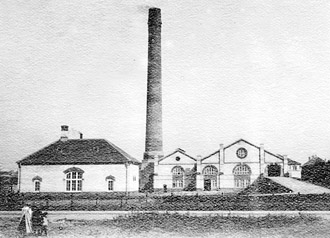
How did the first generation of district heating change the world?
The industrial revolution of the 19th century revolutionized people’s lives in unprecedented ways. Part of district heating in this revolution was to simplify and facilitate urban heating. Instead of each property taking care of its own heating by using logs or coal in its own heating boiler, the heat could be produced in a combined heat and power plant. At the same time, air quality in urban centers was also improved.
Technological developments eventually led to the ability of district heating systems to use water as a heat transfer medium, replacing steam. As water-using systems became more common, the second generation of district heating began.
Second generation: from steam to liquid
As technologies evolved at a rapid pace in the early 20th century, the renewal of the district heating system also took place. Among other things, the development of pumping technology made it possible to change the heat transfer medium from steam to pressurized water. At the same time, the size of district heating networks could be increased thanks to more efficient pumps. Construction of the first second-generation district heating systems began in the 1930s.
The transition from steam to water was a major leap forward for district heating. The benefits of water include improved energy efficiency, a system that is easier to build and maintain, the ability to make more efficient use of return heat, and a more reliable way to measure customers’ energy consumption. Second-generation district heating systems were also more reliable and safer than steam systems.
Massive pipelines shape the landscape
Unlike first-generation district heating systems, pipelines for second-generation district heating networks were often built above ground. These massive pipelines were often made on site, which was laborious, time consuming and expensive. The networks usually consisted of two large pipes, one carrying hot water to the buildings and the other carrying cooler return water back to the power plant. The pipes were usually insulated with mineral wool or polyurethane, which helped to reduce the heat loss in the network. On the other hand, pipes built on the ground were susceptible to damage caused by weather and other external factors, so their energy efficiency tended to decline over time.
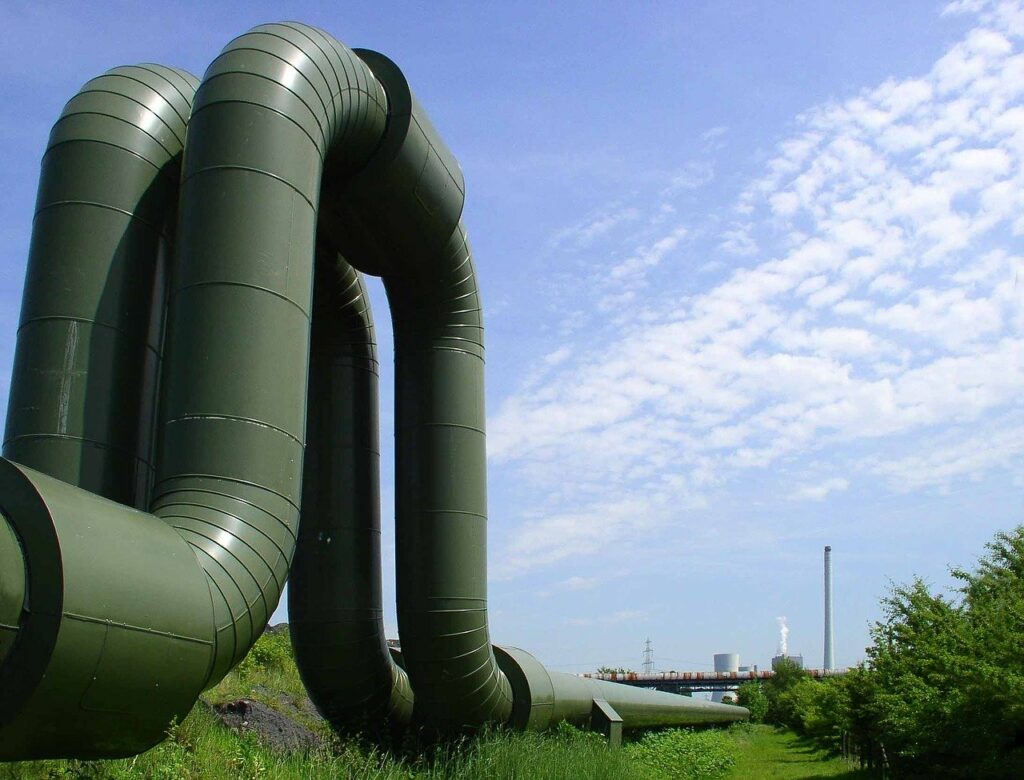
Water-circulating district heating networks were often closed, ie the water circulating in the property’s heating network was separated from the water in the district heating network. In this case, the thermal energy of the district heating water is transferred to the use of the houses by heat exchangers. In some Soviet countries, open district heating networks were built, where the district heating water flows directly for the use of houses.
Cogeneration of electricity and heat begins
During the second generation of district heating, combined heat and power plants (also known as CHP) were also developed. These cogeneration plants revolutionized energy production by significantly improving plant efficiency. Simply put, the CHP plant operates in a way that the steam resulting from the combustion of fuel is first utilized by a turbine in the production of electricity and finally fed as thermal energy to the district heating network. The lower temperatures in the district heating network also enabled more efficient utilization of new fuels. The use of water also made it possible to store energy more efficiently. The result of this development can be seen today, for example, in the form of district heating batteries.
During the second generation of district heating, energy plants continued to use waste and coal as fuel, but the use of oil in energy production also began to become more common.
How did the second generation of district heating change the world?
The transition of district heating networks from steam to water also had clear advantages for the heater: heating was safer and more reliable than before. Life was also a bit more comfortable when the banging and rumbling of steam systems went down in history, thanks to the new technology. It was possible for more and more people to connect to district heating as technological developments made it possible to build bigger networks.
The development of CHP production was also of great importance. Instead of two separate plants, only one plant was needed to produce electricity and heat, so the costs of electricity and heat were kept low. While environmental issues may not have been at the top of the priority list during the second generation of district heating, transitioning from two smoke-puffing chimneys to one improved urban air quality even further.
Overall, the transition to second-generation district heating and its development during the 20th century was a huge leap towards a district heating system like today. The golden age of second-generation district heating systems dates back to the 1930s and 1970s, after which third-generation solutions began to take over the industry.
The next two parts of the series focus on the 3rd generation and 4th generation of district heating. Be sure to check them out too!
